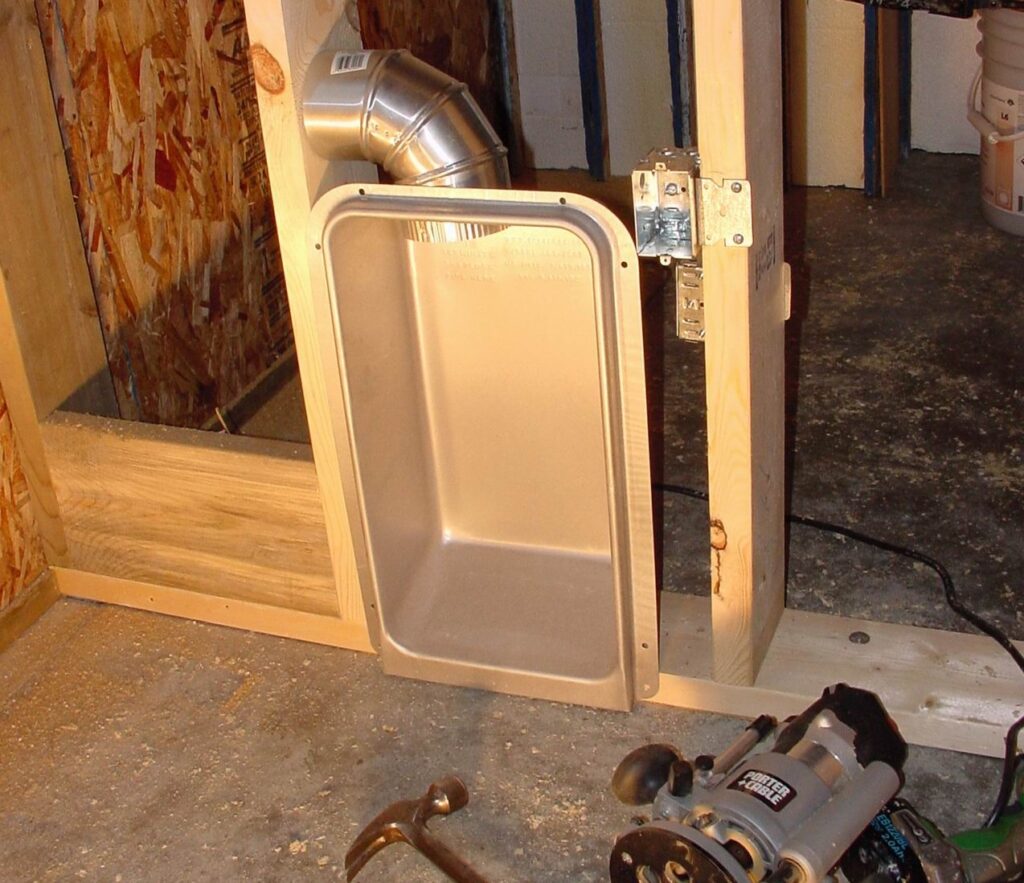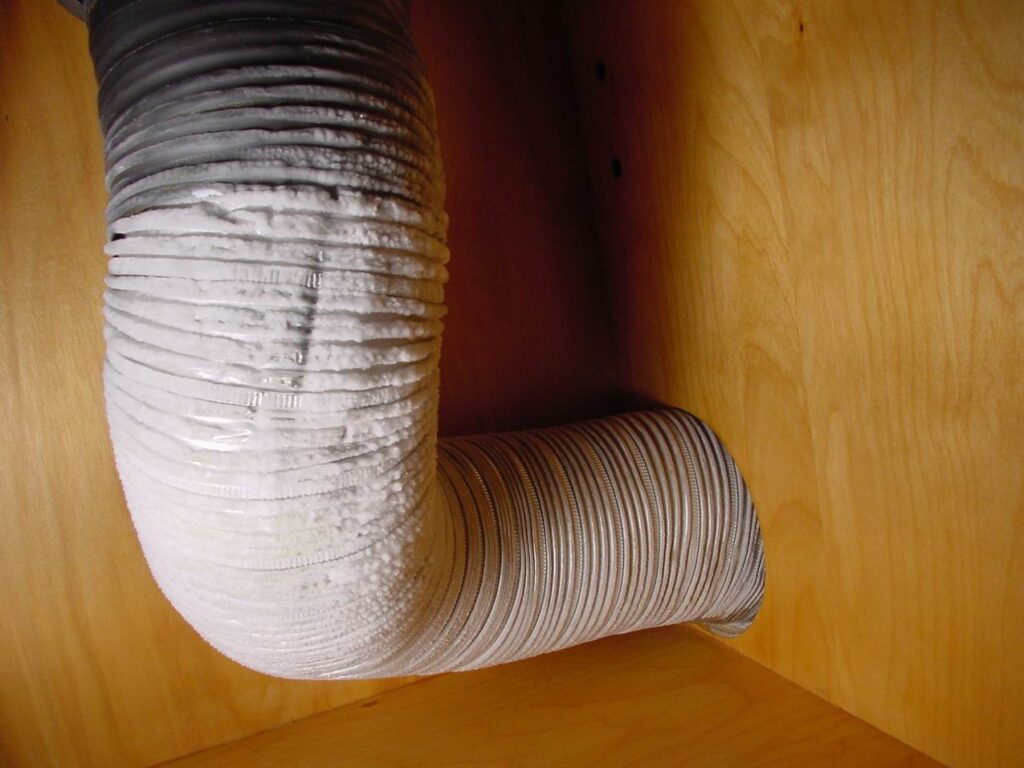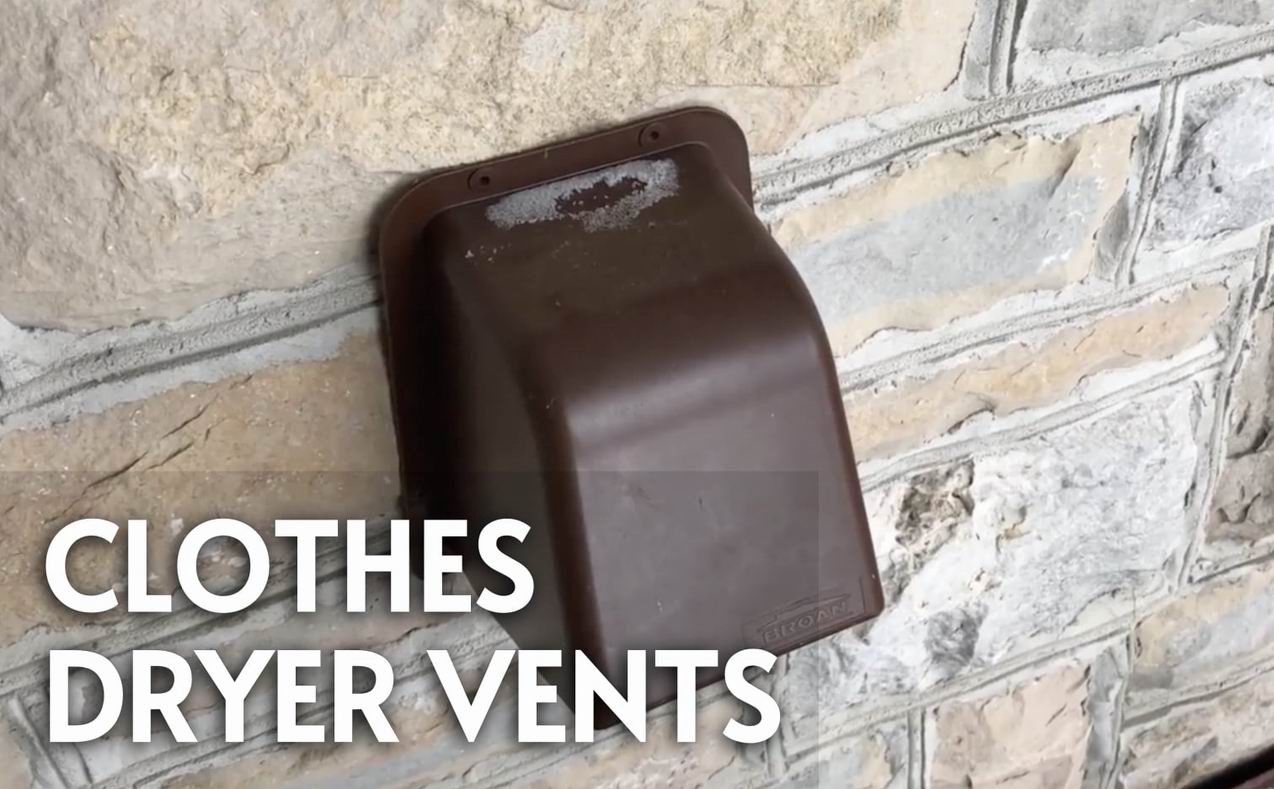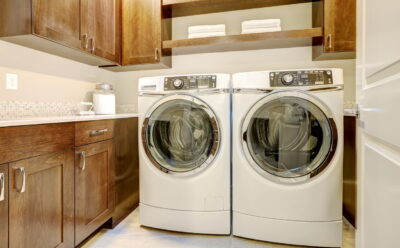Clothes dryer vents have got to be one of the last things builders consider when they’re putting a house together, and it shows.
Take a look behind just about any dryer and you’ll see what I mean — crumpled flexible ducting made of what looks like recycled shower caps or TV dinner trays struggles to survive and stay open as it snakes its way towards a poorly located exit hole, crushed against the back of a dryer pushed too close to the wall.
But, thankfully, the hardware necessary to complete a safe, first-rate, crumple-proof dryer vent hookup now exists. And it’s about time.
Considering the stakes involved, the topic of dryer ventilation connections deserves a lot more attention than it gets. Poor-quality dryer connections waste energy, slow drying time and can admit enough cold air to encase the indoor portion of the vent in frozen condensation during ultra-cold weather. Bad dryer vents can even set your house on fire by trapping and holding lint.
More than 15,000 dryer fires occur each year across North America, and many of these can be traced back to crumpled vent pipes that trap tinder-dry lint. And in the case of gas-fired dryers, bad vents even pose the hazard of carbon monoxide making its way into your home.
Both ends of most dryer vents usually beg for an upgrade, and I’ve discovered several pieces of hardware that make safety and quality easy to achieve.

The first piece of hardware I like is something called the Dryer Box. It’s a stamped steel tray that creates a recess within the wall behind your dryer. Smooth, low-friction steel dryer ducting ends inside the box, creating a safe zone where the flexible ducting that connects to your dryer remains protected. You can even push your dryer right up against the wall and the flexible ducting remains unharmed.
The product is made in the U.S. and is widely available in other countries. Dryer Box is shallow enough that it can be recessed into a 2×6 wall, but note that it must be installed in interior partition walls in cold climates. Installation in exterior walls would compromise the all-important insulation.
Have you ever noticed how much of a pain it can be pulling your dryer away from the wall for cleaning or repairs, only to find that you can’t move the machine out far enough because it’s connected to the vent? This is where the MagVent dryer vent connector can help.
I have one installed at my place (from Lee Valley Tools) and it works great. One half of the MagVent gets fastened to the vent coming out of the dryer, and the other half gets fastened to the end of the vent duct. The two halves come together and stay together with magnetic attraction, but it’s easy to pull them apart for a quick disconnection of the duct from the dryer when needed.

Cold winters offer another reason to take a second look at the other side of your dryer vent, the place where the duct ends outdoors. This is where you’ll probably find a plastic vent flap that’s supposed to stop cold air from back-drafting into your dryer and your house.
But have you ever seen a plastic flap vent that actually worked? I haven’t. Just open up the dryer on a cold day and see for yourself. It’s typically cold enough in there to safely store milk and meat between loads of laundry.
This is because the slightest breeze flips the lightweight flap up, letting enough cold air indoors to create significant ice build-up on the outside of many dryer vent pipes as it makes its way to your machine. Besides admitting cold air into your home, frost can build up on the outside of the dryer vent, causing drips and sogginess when the frost melts.

Since 2009, I’ve been using a Canadian invention called Ecovent (Broan model#EV100) and it solves the silly dryer flap problem once and for all. The heart of the Ecovent is a plastic hood that’s filled with rigid foam insulation that surrounds a loose foam sealing ball.
Gravity and wind both work to seal the ball tightly into the vent when the dryer is off. The ball opens it up elegantly when you switch on your dryer and air starts to flow outwards. All in all, it’s a great solution to one of the unique challenges of creating a dryer vent system that actually works.
Here’s a video tour of Ecovent.








